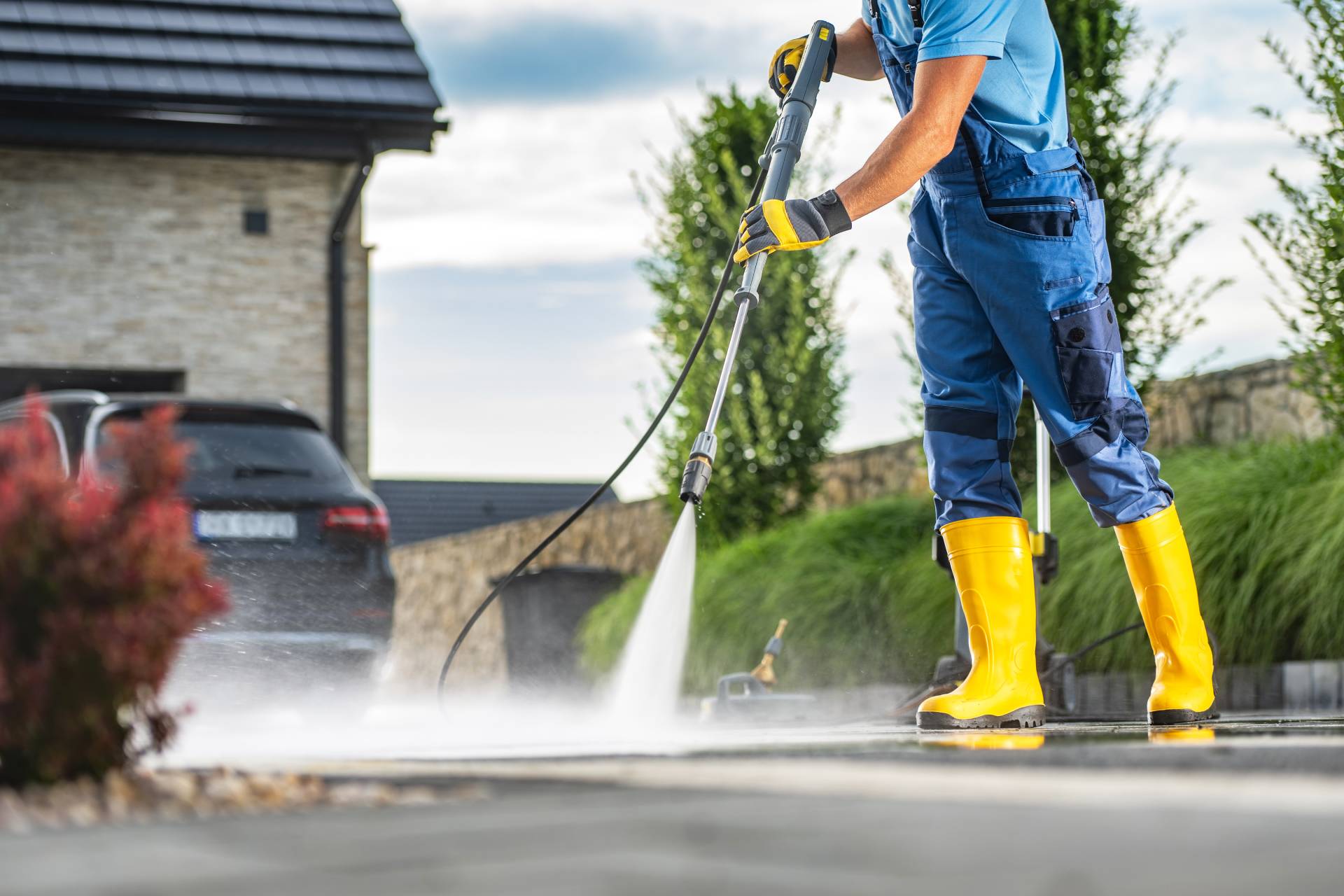
Power washing can work wonders on your property—blasting away dirt, moss, oil stains, and algae in seconds. But when it comes to cleaning asphalt or blacktop driveways, many homeowners ask the same question: Can pressure washing actually damage the surface?
The short answer: Yes, it can—but only if it’s done incorrectly. When used properly, power washing is a safe and effective way to clean asphalt. Let’s walk through how to do it right, what to avoid, and how to maintain your driveway’s integrity while getting it squeaky clean. 🧼✅
🧱 Understanding Asphalt: Not Just Black Concrete
First, it’s important to understand what asphalt is.
Asphalt (or blacktop) is made from a mixture of gravel, sand, and petroleum-based bitumen. It’s a flexible surface compared to concrete, which is hard and rigid. Asphalt’s pliability helps it resist cracking from minor ground movement, but it also makes it more vulnerable to damage from heat, pressure, and erosion.
Because of its composition, asphalt:
- Can soften under high heat ☀️
- Is more porous than concrete 🕳️
- Contains a binder that can degrade if aggressively cleaned 🧪
💦 Is It Safe to Pressure Wash Asphalt?
Yes—but only at the right PSI, with the right technique. If you crank up the pressure or use the wrong nozzle, you can:
- Erode the surface
- Dislodge aggregate (gravel)
- Strip away sealant
- Create streaks or gouges
That’s why it’s essential to use a gentle touch and proper equipment.
✅ How to Pressure Wash Asphalt the Safe Way
Let’s go step-by-step:
1. Inspect the Surface First
Check for:
- Cracks or potholes
- Loose gravel
- Oil or chemical stains
- Recently sealed areas
📆 If your driveway was sealed within the last 6 months, it’s best to avoid pressure washing—it needs time to fully cure.
2. Sweep the Area Thoroughly
Remove all debris, sand, and leaves with a broom or blower. This prevents clogging your washer and ensures even cleaning.
🍂 Don’t skip this step—grit left behind can scratch or dig into the surface.
3. Pre-Treat Stains
Apply a degreaser to oil stains, tire marks, or mildew. Let it sit for 10–15 minutes before pressure washing.
🧴 Use biodegradable, asphalt-safe cleaners like:
- Simple Green
- Oil Eater
- Krud Kutter Driveway Cleaner
4. Use the Right Pressure and Nozzle
- PSI range: 1,200–2,000 MAX
- Nozzle: 25° or 40° (NEVER use a 0° or turbo nozzle on asphalt)
- Spray angle: Keep the wand at a 45° angle, 12–18 inches away
🚫 Avoid high pressure or narrow streams that can etch the surface.
Browse Amazon Here For Top Rated Power Washers And Accessories
5. Use Smooth, Overlapping Sweeps
Move in long, even strokes, overlapping by about 30%. Keep the wand in motion to avoid concentrated damage.
🎯 Pro tip: Start with a small test area in a less visible corner.
6. Rinse Thoroughly
After cleaning, rinse the entire surface with low pressure to remove detergent and debris.
7. Let It Dry Completely
Give the driveway 24–48 hours to fully dry before driving or sealing. Moisture trapped beneath the surface can cause bubbling or cracking if sealed too soon.
🔄 Should You Seal After Pressure Washing?
Yes—resealing is recommended every 2–3 years, especially after a deep clean. Power washing can remove a thin layer of sealant along with grime, so resealing helps:
- Restore color and appearance
- Protect against water and UV damage
- Extend the life of the asphalt
🛢️ Use a high-quality asphalt sealer and apply during mild weather for best results.
⚠️ Common Mistakes to Avoid
- ❌ Using a 0° nozzle (can gouge the surface)
- ❌ Applying too much pressure or staying in one spot too long
- ❌ Washing freshly sealed asphalt
- ❌ Ignoring small cracks or potholes—water can make them worse
🧠 Pressure washing shouldn’t be aggressive. Think of it as rinsing grime off, not blasting it into oblivion.
🌿 Eco-Friendly Best Practices
- Block off storm drains to prevent runoff
- Use environmentally safe detergents
- Sweep up solids before washing
- Avoid bleach or acidic cleaners that break down asphalt binders
🌎 A clean driveway shouldn’t come at the planet’s expense!
✅ Final Thoughts
Power washing your asphalt driveway can be safe and highly effective—as long as you respect the surface. With the right PSI, nozzle, and cleaning strategy, you can rejuvenate your blacktop without causing harm.
Remember: gentle pressure, good prep, and smart sealing are your best friends when it comes to asphalt care. 💪🛣️🧼
Browse Amazon Here For Top Rated Power Washers And Accessories






